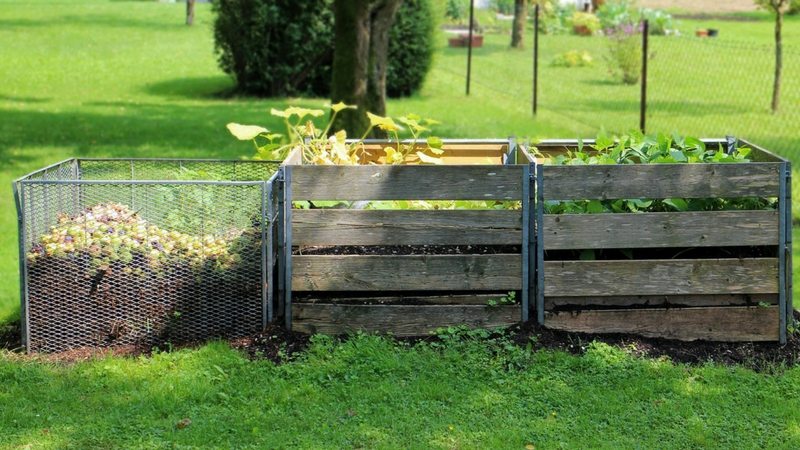Compost
Episode #8 of the course Small-scale gardening by Alice Morgan
Good morning! Now that we’ve talked about potential dangers to your garden, let’s look at one of the most beneficial actions you can take: making your own compost.
Making Compost
Compost is a nutrient-dense soil created from decomposing naturally occurring material. As the individual pieces of material decompose, they mix to form a dark, rich soil amendment that your garden will absolutely love. Making compost can seem intimidating but it’s not very difficult. All you’ll need to do is pile organic material together, keep it damp, flip the pile over a time or two, and wait. Let’s take closer look at the composting process.
Compost Bin and Piles
You have quite a few options when it comes to storing your maturing compost. If you want to keep it contained and out of sight, there are several different varieties of bins you can purchase. The most basic are modeled after a garbage bin. They are made of plastic or metal and will require that you manually turn the compost with a shovel. Other compost bins are designed to lie on their side, making them easy to rotate without having to dig the compost out to turn it. If you’re short on time or space, I recommend purchasing one of these two styles for home composting.
You can also purchase or build open bins in your backyard. These are wonderful for people with more space who want to get serious about their compost. You can make them as large as you like, and even build in sections for different ages of compose. Using a compartmental method allows you to always have a batch “cooking.”
Finally, if you have enough space and don’t mind seeing your compost more often, you can create a pile of organic material right on the soil in a mound. Choose a convenient spot that’s both out of the way but not so far that you may be tempted to neglect it. Some people prefer to place their compost pile on a brick or concrete pad, but many put it straight on the ground. To simplify composting further, you can also dig trenches in your garden and bury the organic material directly in the ground.
Composting Material
Almost any natural material can go in your compost pile. Good kitchen scraps include fruits and vegetables, eggshells, bread, coffee grounds, tea bags, and more. Avoid dairy, fatty foods, meat, and bones to prevent scavenging animals. You can also add yard waste like chopped leaves, flowers, branches and twigs, pine needles, grass clippings, and the leaves and roots of spent plants. Make sure not to use any diseased vegetation or weeds that have already developed seeds. Finally, you can also get rid of some home waste, including shredded office paper, newspaper, and cardboard, as long as they lack colored ink and are not glossy.
Managing Compost
Most of the work in composting comes in remembering to “feed” your pile with organic matter. You will need to turn it every month or so to mix material together and keep the decomposition process going smoothly. To manually turn your pile, grab a shovel and move the bottom layer of the compost to the top. You also want to keep compost moist, so occasionally wet it down with water. Lastly, you need to monitor the nitrogen and carbon levels of the pile. A healthy compost pile is ⅔ carbon (paper, sticks, leaves, etc.) and ⅓ nitrogen (kitchen waste, green leaves, green grass, etc.). A well-tended compost pile shouldn’t smell like anything other than healthy soil. If it does, add more carbon. Finished compost looks like rich soil and has an even composition.
In conclusion, composting seems complicated but can be as simple as throwing your organic waste in a pile and leaving it alone for awhile. The effort you put into making your compost will pay off in spades in your garden. Tomorrow, we’ll finally get to what all this work is about when we discuss how to harvest and preserve your produce.
Recommended book
Let It Rot!: The Gardener’s Guide to Composting by Stu Campbell
Share with friends

